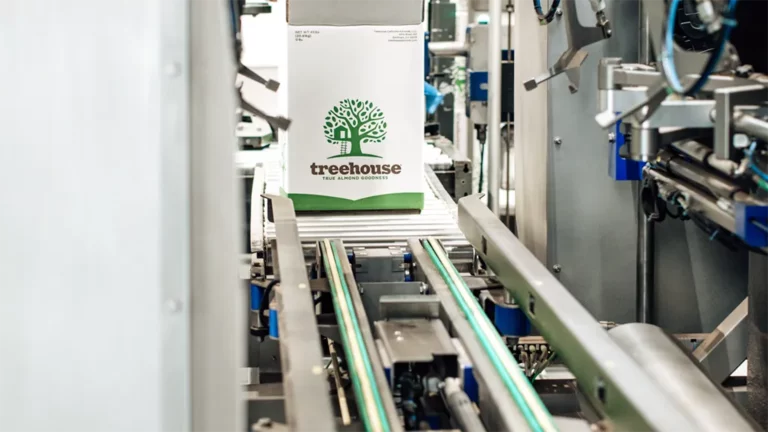Empty cart
Oh no! It appears your cart is empty. Add some almonds to your daily regime with the Treehouse products.
All Blog PostsAlmond Market UpdatesNews
California almond handlers shipped a record 228.5 million lbs in November, up 21.8% from shipments of 187.5 million lbs in November a year ago. Strong Indian, domestic and Western European shipments accounted for all of the increase. Indian shipments increased by 23.1 million lbs to 30.0 million lbs. Although it was widely anticipated that Indian shipments would be sharply up from last November when demonetization paralyzed activity, 30.0 million lbs is at the top end of expectations and underscores healthy trade demand. Domestic (USA) November shipments contributed 8.9 million lbs of the increase, posting a 17% increase to 61.1 million lbs. Western European November shipments increased by 10.0 million lbs versus a year ago, a 26% increase to 48.7 million lbs. While Spain was relatively steady, strong increases were seen in German, UK, Dutch and French shipments.
Chinese shipments were slightly up (2.3%) at 27.7 million lbs. Chinese demand remains a key to the future strength of the market. Chinese year to date shipments are now 8% behind last year, but we anticipate that shipments will be healthy in the second half of the year. While importers have been a wary of price weakness after January, underlying consumption is strong, particularly with almonds prices competitively positioned versus other tree nuts.
Season to date shipments at 834.1 million lbs are now running 5% ahead of last year. This is a remarkably different picture from a month ago when shipments were slightly behind running totals. Projecting a 5% increase in shipments between now and the end of the season puts the carry-out right at 400 million lbs (about unchanged from a year ago) and potentially a difficult transition as high serious damage has already made better grades in scarce supply.
A look at commitments suggests that a 5% increase in shipments, which calculates out at 105 million lbs, is within reason. End November commitments were reported at 660 million lbs, 110 million lbs ahead of commitments of 550 million lbs at the same time a year ago. The change in commitments from end October infers that new sales in November were brisk at 212 million lbs. This is a record for November and compares to 150 million lbs last year. California’s sold and shipped position now calculates at a comfortable 67.8% of the sellable 2250 million lbs forecasted crop. For those who like the number expressed in terms of total supply, 57.4% is now sold and shipped.
Crop receipts increased by 464 million lbs in November to total 1993 million lbs at the end of the month. After a later start and lagging for most of the season, receipts are now 63 million lbs ahead of last year. Nonpareil receipts account for 837 million lbs of the total. We remind that the 2017 crop is forecast at 2250 million lbs, an increase of 115 million lbs versus 2016. The 2017 nonpareil crop is forecast at 900 million lbs. The crop forecast still seems reasonable.
Almost in contrast to all the shipping excitement, prices over the past month have remained range-bound. On the bottom end, standard 5% (supposedly in good supply) traded between $2.32 and $2.35 per lb. Cal SSR 27/30’s were seen ranged between $2.45 and $2.50 per lb, while Nonpareil Supreme 27/30’s were pretty steady between $3.15 and $3.20 per lb. Nonpareil inshell was seen between $2.40 and $2.45 per lb. Blanched sliced and slivered is seen to be between $3.20 and $3.35 per lb depending on the quality and packer stance. Better grades and sizes (NPX and Carmel type Supremes) are maintaining strong premiums.
Following on the heels of record October shipments of 246.5 million lbs, November shipments reiterate strong demand for almonds at these price levels. The critical shipment months are in the rearview mirror and commitments are providing good visibility for the next few months. Sellers can be expected to relax as they now figure out what they have left to sell for the remainder of the season. Indeed we have already seen this playing out over the past few weeks. On the other side, buyers are generally thought to be well covered. We remind that every pound that has been sold has also been bought. For those who have not covered they will now have to wait for winter rains (a very dry start to wet season so far in California) and then a good bloom to provide a chance for downside relief, which is likely to be limited as long as shipments continue strong. Although the cards now appear to be favoring a firming market, the potential for a big 2018 crop should keep aspirations in check.
Best Regards,
Jonathan Meyer
CEO
Trehouse California Almonds, LLC.
Stay tuned for the release of significant almond industry information, such as almond crop estimates and acreage reports. You’ll also find Almond Board shipping reports and related analysis from the Treehouse Almonds Leadership Team.

Be in the loop for vital news about the California almond market.
Enjoy 10% off when you order 6 or more